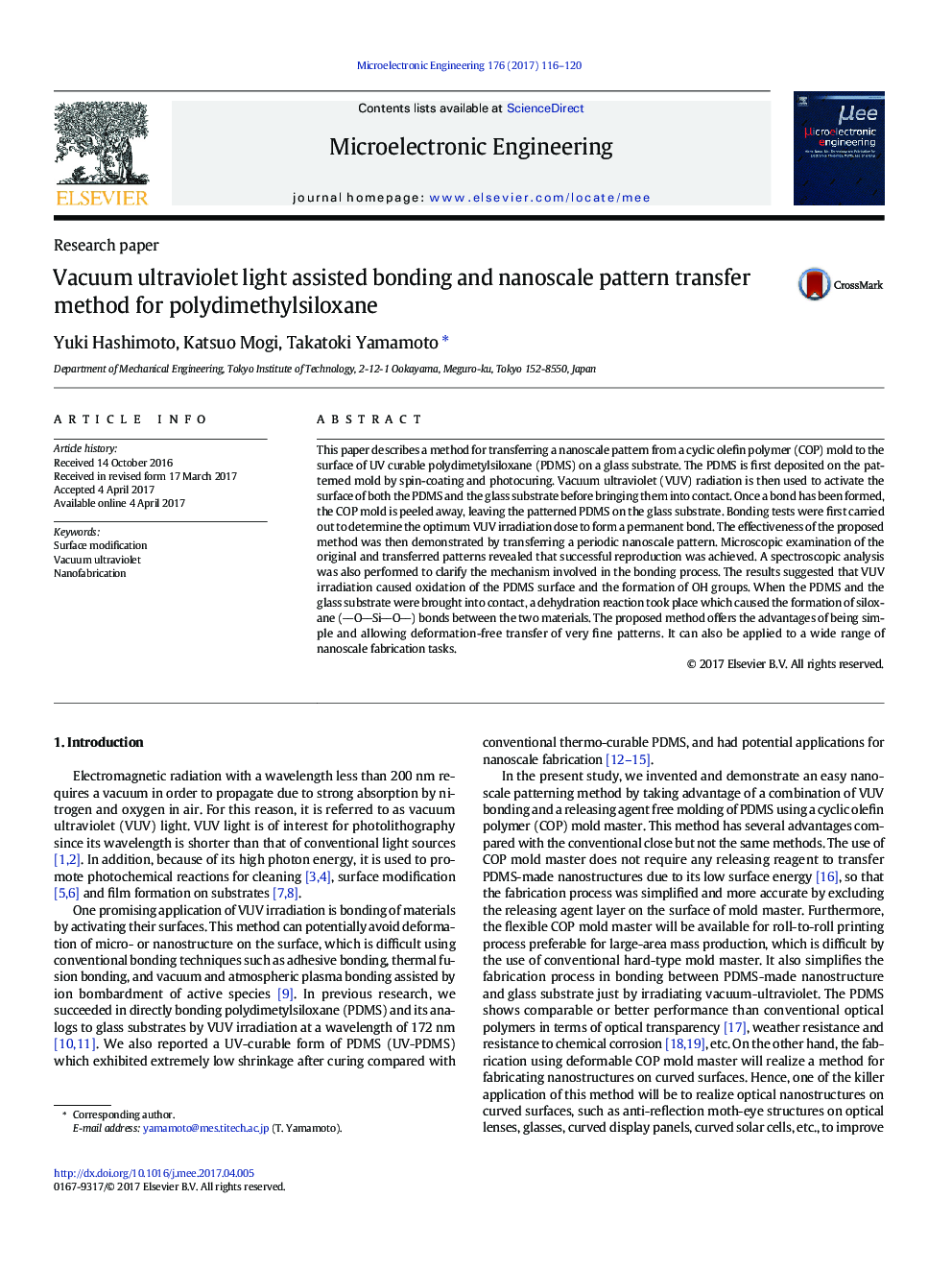| Article ID | Journal | Published Year | Pages | File Type |
|---|---|---|---|---|
| 4970936 | Microelectronic Engineering | 2017 | 5 Pages |
â¢Provide a nanoscale transferring method from a mold made of cyclic olefin polymer to UV curable polydimetylsiloxane.â¢Surface excitation by vacuum ultraviolet light at 172 nm was effectively worked as the adhesive between PDMS and glass.â¢The bonding mechanism by vacuum ultraviolet light involved oxidation of the PDMS surface to form OH groups.
This paper describes a method for transferring a nanoscale pattern from a cyclic olefin polymer (COP) mold to the surface of UV curable polydimetylsiloxane (PDMS) on a glass substrate. The PDMS is first deposited on the patterned mold by spin-coating and photocuring. Vacuum ultraviolet (VUV) radiation is then used to activate the surface of both the PDMS and the glass substrate before bringing them into contact. Once a bond has been formed, the COP mold is peeled away, leaving the patterned PDMS on the glass substrate. Bonding tests were first carried out to determine the optimum VUV irradiation dose to form a permanent bond. The effectiveness of the proposed method was then demonstrated by transferring a periodic nanoscale pattern. Microscopic examination of the original and transferred patterns revealed that successful reproduction was achieved. A spectroscopic analysis was also performed to clarify the mechanism involved in the bonding process. The results suggested that VUV irradiation caused oxidation of the PDMS surface and the formation of OH groups. When the PDMS and the glass substrate were brought into contact, a dehydration reaction took place which caused the formation of siloxane (OSiO) bonds between the two materials. The proposed method offers the advantages of being simple and allowing deformation-free transfer of very fine patterns. It can also be applied to a wide range of nanoscale fabrication tasks.
Graphical abstractDownload high-res image (212KB)Download full-size image
